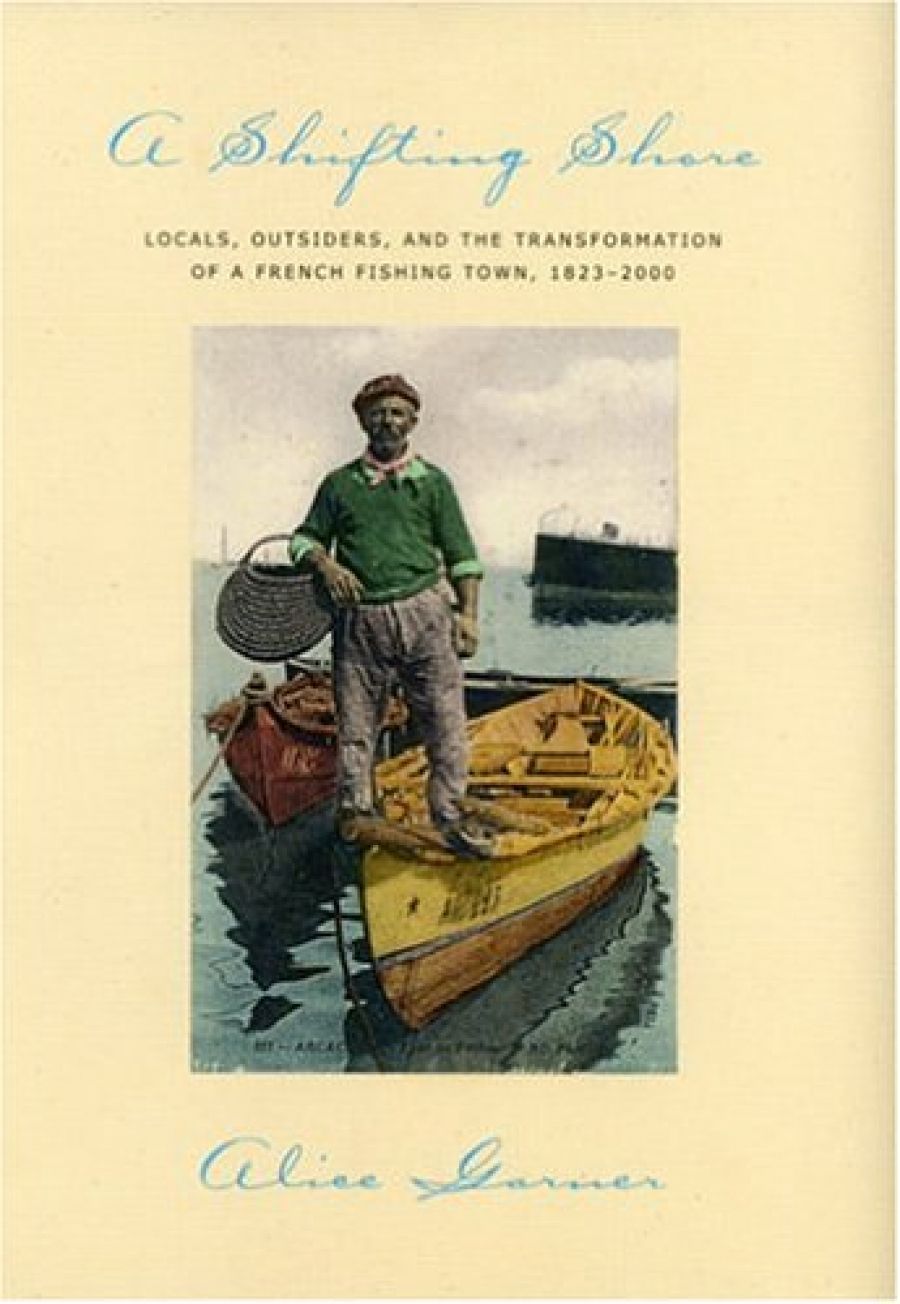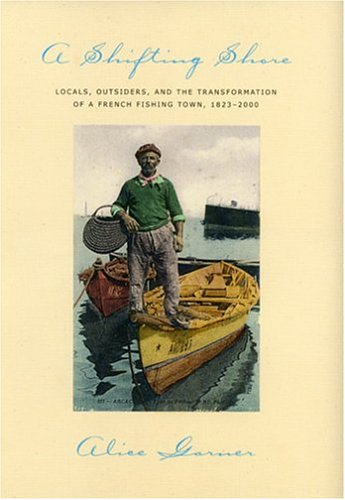
- Free Article: No
- Contents Category: French Studies
- Review Article: Yes
- Article Title: Pearl Bay on the Bassin
- Online Only: No
- Custom Highlight Text:
Alice Garner asks us to ‘dip our toes’ into the history of the shifting shore of the Bassin d’Arcachon, but she is being coy. Her study of sea change and social conflict in the nineteenth century (for the most part) in this particular part of south-west France demands that we need to wade with her into the deep waters of exhaustive primary sources. As a research fellow in the History Department at the University of Melbourne, she is indefatigable and meticulous. This presumably well satisfies the requirements of academe, and shows her to be a fine historian, but it tends to dampen some of the liveliness that might have more easily seduced the general reader to the stories of ambition, progress, counter-attack and conflict that resulted in a resounding win for development and tourism in an age when industrialisation and railways, architectural conceits and money turned a coastal fishing and oyster-fishing area into a ‘bathing resort’.
- Book 1 Title: A Shifting Shore
- Book 1 Subtitle: Locals, outsiders, and the transformation of a French fishing town, 1823-2000
- Book 1 Biblio: Cornell University Press, $69.95 hb, 320 pp
- Book 1 Cover Small (400 x 600):

- Book 1 Cover (800 x 1200):

Towards the end of her story, Garner writes that, in speaking to oyster farmers, fishermen and boat operators in the 1990s, she found that ‘many of the issues causing tension in the 1800s were still alive a century later’. Arcachon, she says, ‘is still a contested space’, and it is this tension that she sets out to explore, not least through the fascination of postcards. There is no better emotional and intellectual place to start than an image that asks to be understood: its layers of meaning, the commodification of work to become a kind of suspended performance, the romancing of artisanal fishing (the very activity that developers wanted to banish from the sight of bourgeois holiday makers), a sense of history that the development of the resort would cleanse by prescriptive ordinances and new buildings, even when, in the late nineteenth century, it was acknowledged by one observer that oysters and sardines provided ‘the commercial fortune of the entire Arcachon area’.
Peculiar to the Bassin d’Arcachon’s history is the mid-nineteenth century’s interest in the beneficent effects of sea bathing, sea air and sea cures, which would result in the Ville d’hiver (Winter City), where consumptives might take the cure. Garner points to this as an example of ‘the interlocking interests of doctors and investors’. The Ville d’hiver was built on land that had once been state-owned forest: privatisation became an integral part of the transformation of the Bassin. But while property development in the name of health changed the topography inland from the Bassin, a different ‘vision’ saw plans for jetties, not for work but as built promenades to allow visitors and bathers to see and be seen, and to look back at the shore, which acted, Garner writes, as ‘both auditorium and backdrop’ and included notions of ‘set design and casting’. Although a proposal by Baron Michel for a Brightonesque pier with a palace was never followed, a casino designed to suggest the Alhambra and the Cordoba mosque opened in 1863.
Throughout this busy, progressive phase, the fishing community continued to provide local and distant cities with a large share of France’s seafood, especially oysters. While postcards turned this community into the idealised and the picturesque whose presence seduced tourists, it faced the reality of municipal pressure to make way for bathers. They were blamed for litter, which kept bathers away; then working-class bathers were seen as the litter. If this all seems like the making of a Tidy Town Disney World, we need to comprehend the forces of progress at play in nineteenth-century France and the cultural cross-fertilisation that allowed the architects of the new resort their particular, fanciful style.
A Shifting Shore is illustrated with the black-and-white postcards from Arcachon. These prove anything but ephemeral to the historian when studied in tandem with the formal archives. Follow, for instance, all the references to oysters, oyster gatherers, sellers and oyster farms, as one way of wading into the mud flats of the Bassin, and you will be fascinated by the working clothes, tools and transport, and by the sense of unceasing labour in a place where the sea meets the shore as the tide shifts.
Garner, an Australian researching the transformation of a French working shore into an investors’ dream, insists that her fascination is always with the coastline, and one cannot help but think of our collective fascination with the edge. The grotesque, amoral real estate agent Bob Jelly, mayor of the fictional Pearl Bay in the television series SeaChange, suddenly seems like a transmogrification of Arcachon’s first mayor, Lamarque de Plaisance, although Pearl Bay resisted the bridge to change and voted for sleepiness. I think of Sorrento, the poor cousin to Portsea, the playground of the rich in Victoria, where I spent so much time in the 1960s eating the scallops and flounder that were fast-fished to miniscule numbers, and of places such as Streaky Bay on the Eyre Peninsula, where the oysters and blue swimmer crabs breed for the commercial fishermen, as well as for the tourist, if she is willing to travel so far, and where the distance from a big city is still so insurmountable that it remains sleepily paradisiacal. Barry Hill has recently written a history of Queenscliff, the town at the other head of Port Phillip Bay, a place that was, to quote Morag Fraser, ‘inseparable from working lives connected with the sea, that had little to do with the flotsam of tourism’.
A Shifting Shore, a gorgeous American university publication about a different country and a different time, is disquietingly relevant to Pearl Bay, even if Pearl Bay never quite existed.


Comments powered by CComment